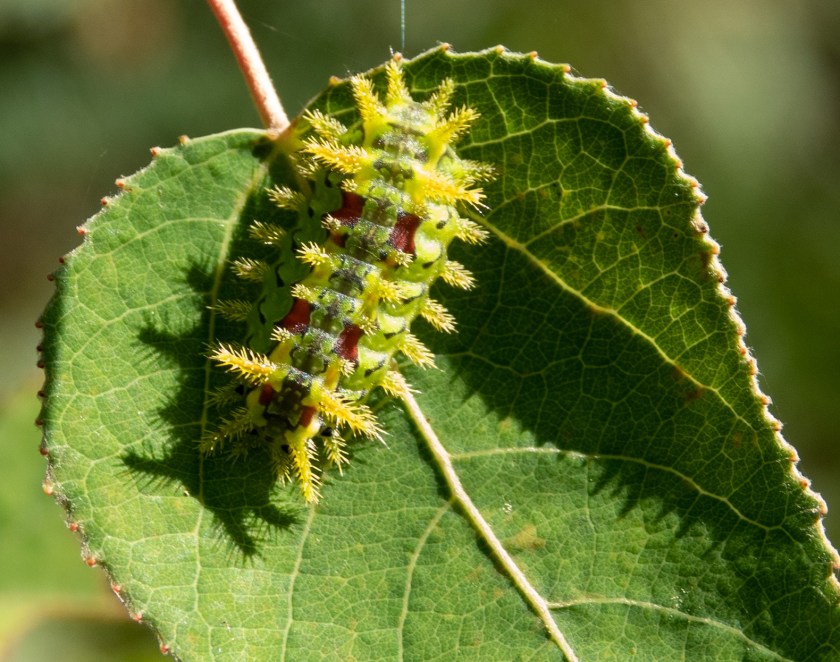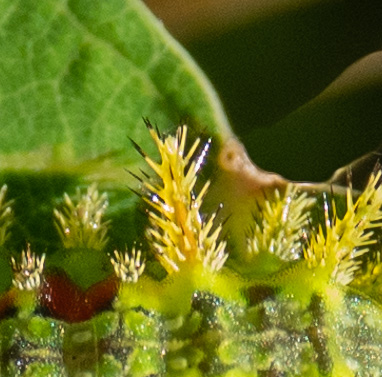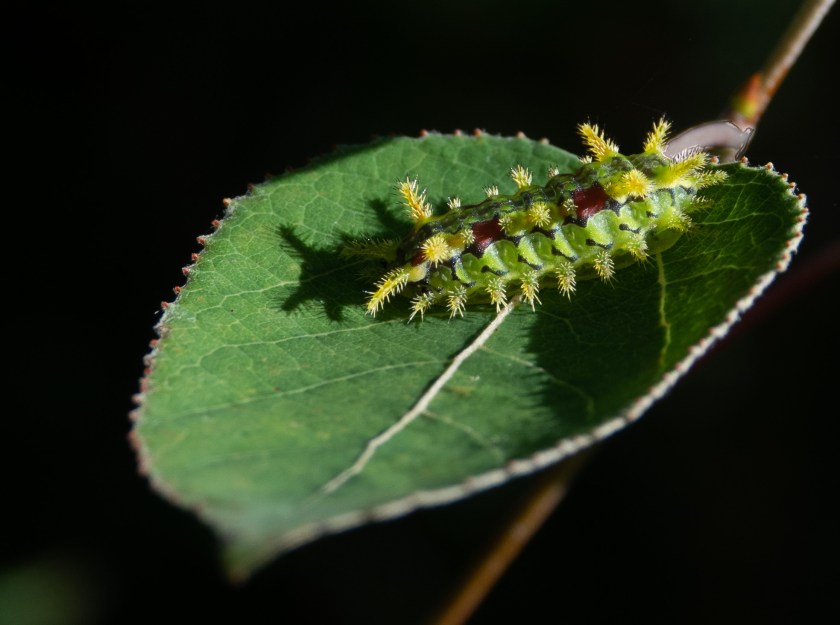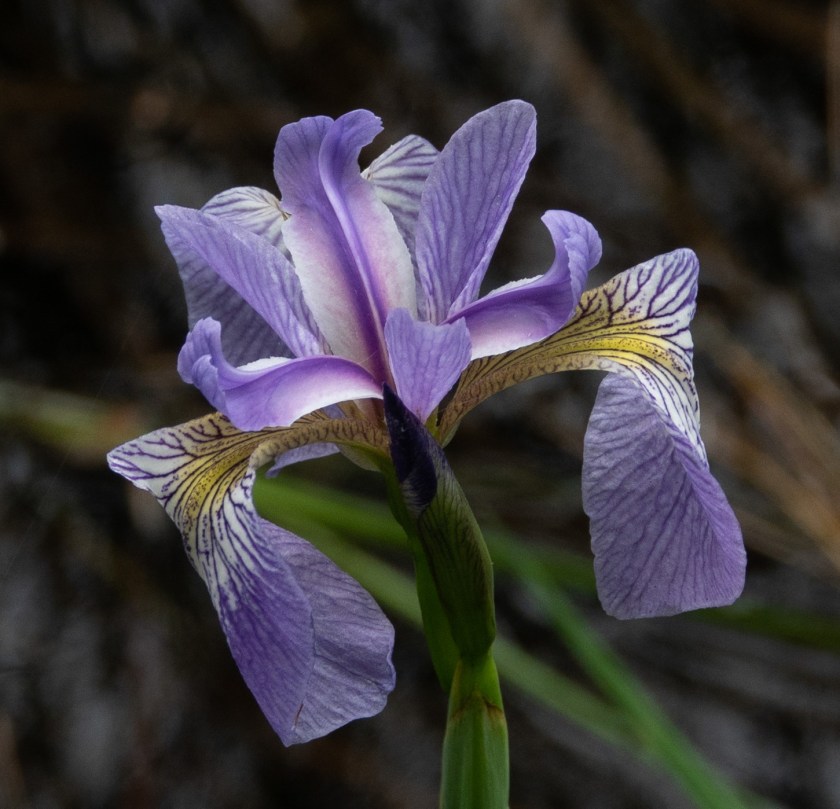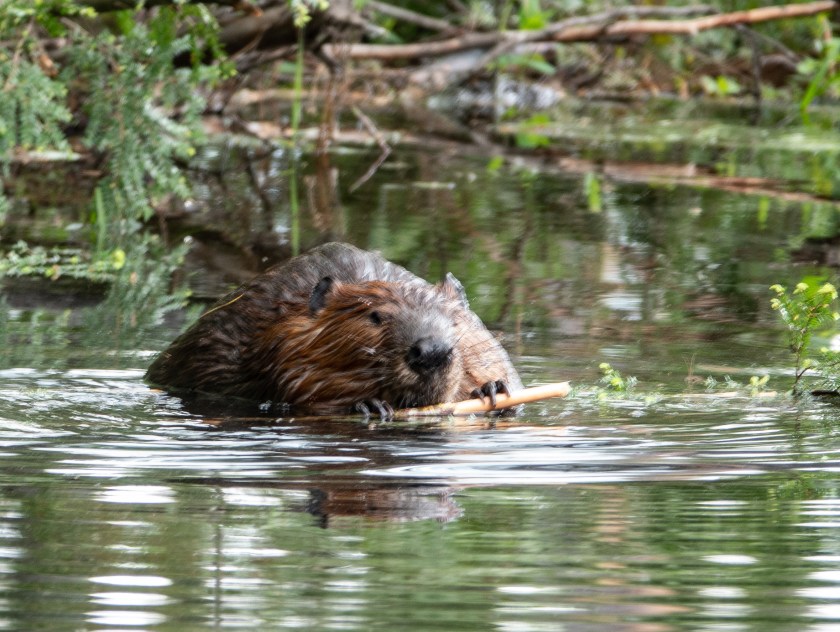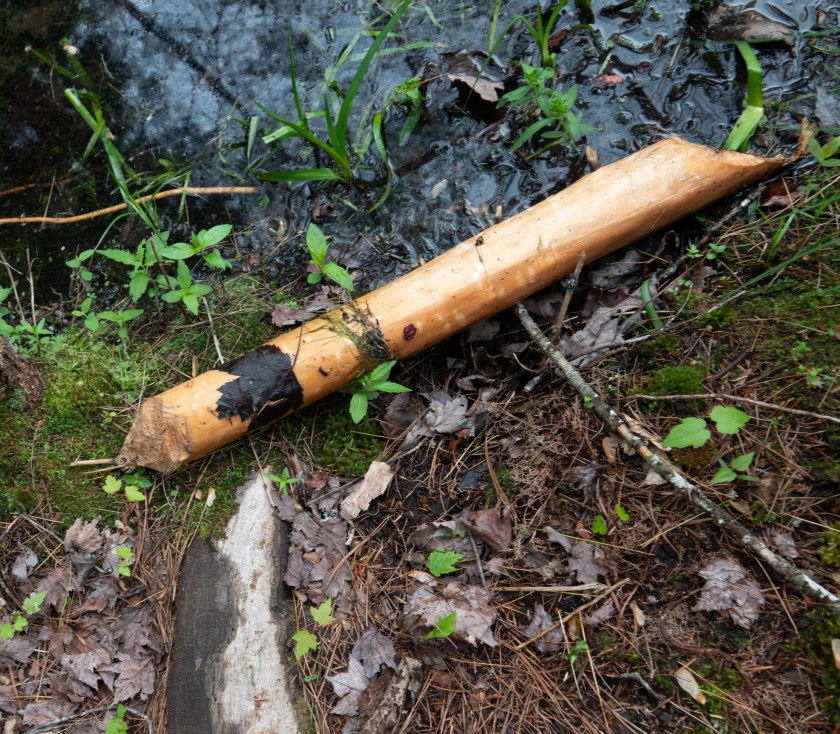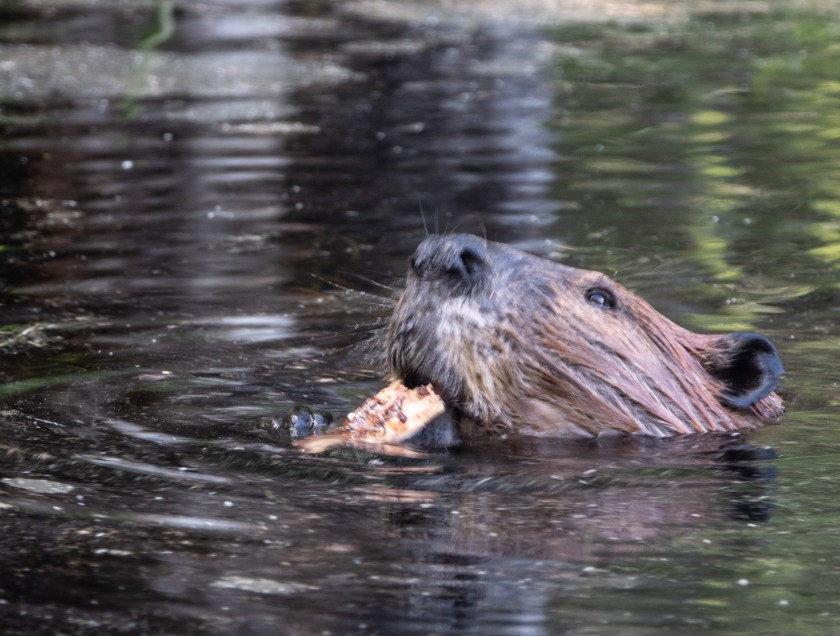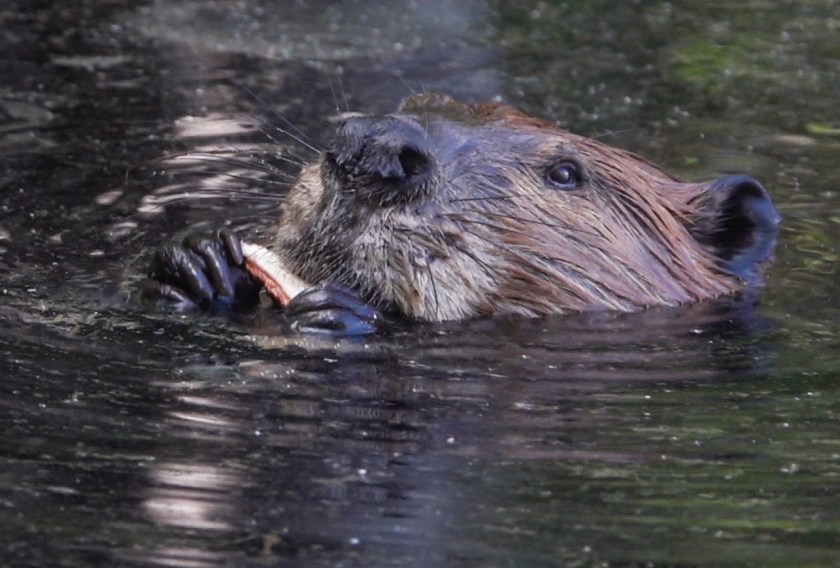Not every post can be about elegant swallows. Sometimes what catches my attention is less obviously appealing.
My father hated greenflies, because they attacked his beloved roses. Greenflies are a type of aphid, and here in Maine we have a number of different species, in a rainbow of colors, including the bright yellow Oleander Aphid, Aphis nerii, common on milkweed:

and these ruby red ones, probably Uroleucon nigrotuberculatum.

If you can suspend your distaste, they turn out to be rather interesting. They reproduce partly by parthogenesis: the adult female produces live young, clones, without the need of a male. In the autumn, they also reproduce sexually: rather like modern humans, there is no one right way.
Although most aphids don’t have wings, as you can see in the photos above, if the neighborhood gets too crowded the female cleverly gives birth to some offspring with wings, and these then fly off to populate a new plant instead of adding to the throngs on the current one. The biggest one below has wings:

If you are a gardener, you are no fan of aphids, but if you are an ant, your attitude is entirely different! Some species of ants actually farm aphids for their honeydew:

The aphid sucks sap from the plant, sometimes in huge quantities. Because it can’t digest it all, it excretes a sweet sugary liquid, called honeydew. The ants use their antennae to stroke the aphids, which encourages the secretion of the honeydew, which the ants then drink. The aphids below are tiny, but just visible on the leaf stalk, and the top ant is reaching out to stroke one:
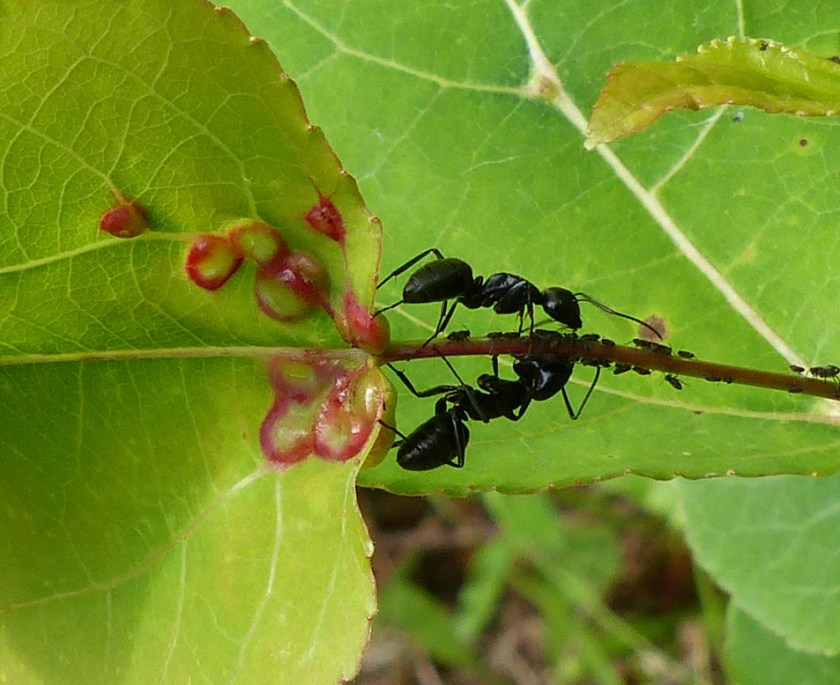
The aphids benefit because the ants protect them from predators such as ladybugs, and also move them from wilting to healthy plants. In some species, the ants will store aphid eggs in their nests through the winter and then put them back on the plants in the spring. This partnership is an example of what biologists call mutualism, since both parties benefit from the arrangement.
The spiky cornicles that project from the abdomen are used to exude pheromones for defense purposes; the honeydew is, rather off-puttingly, exuded from the rectum!
If you have read this far, congratulations: you too are obsessed by natural minutiae.
